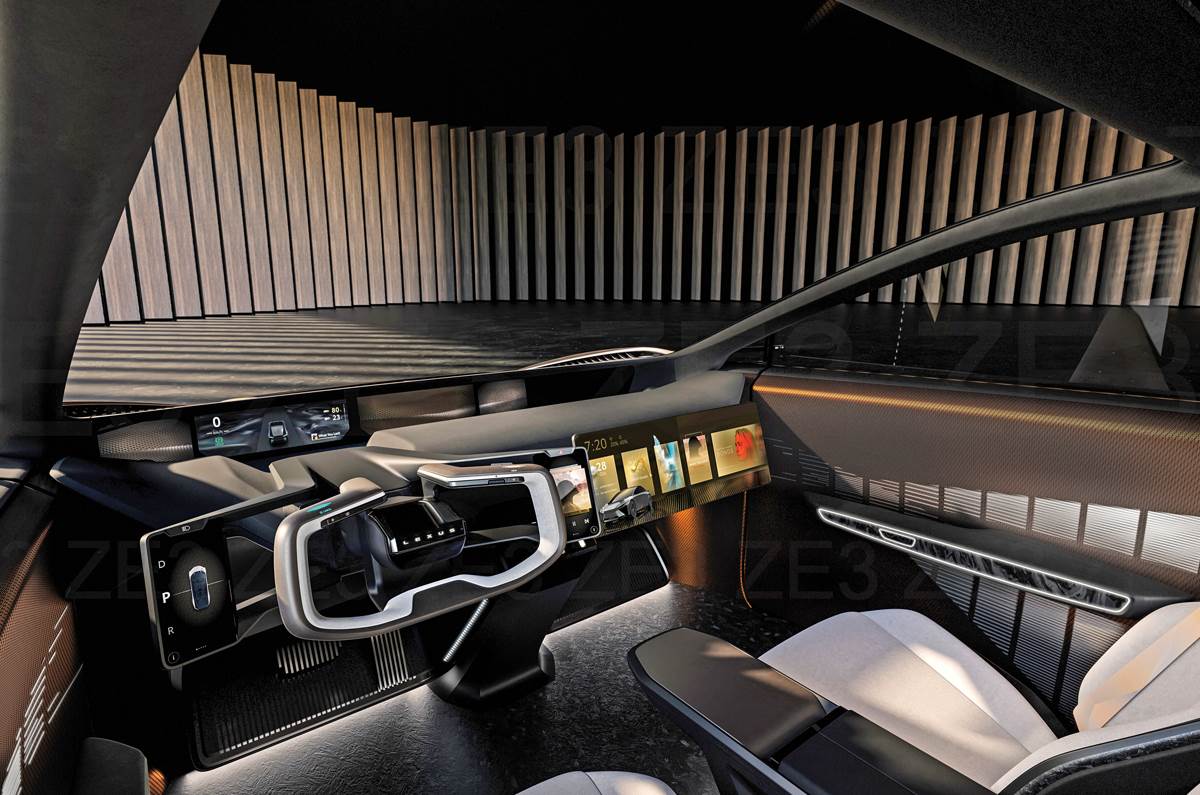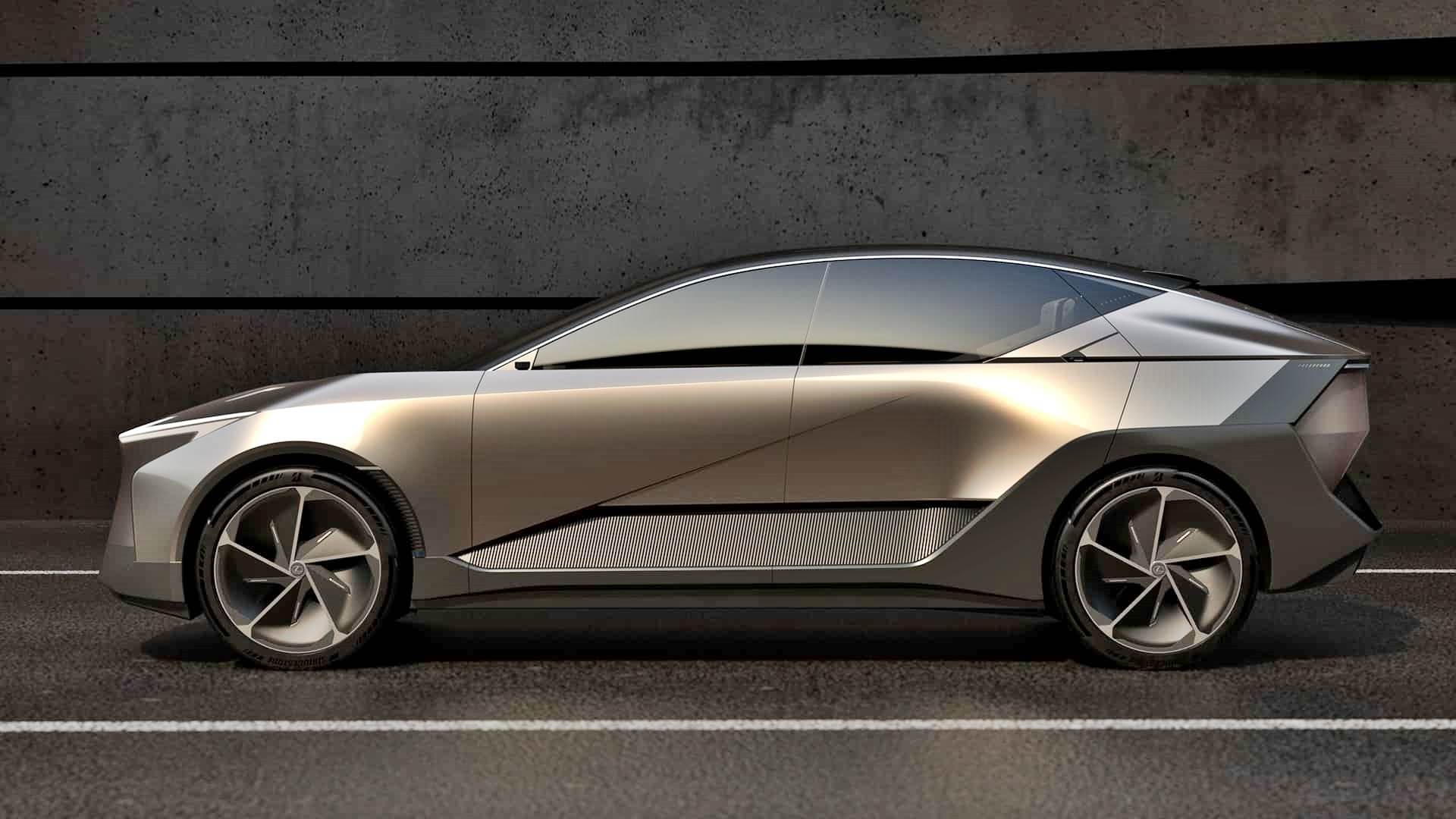Japanese carmaker will be aiming to ‘out-tech’ its German rivals with next-gen BEV range.
Lexus has big ambitions to exponentially grow sales and market share in the Indian luxury car market on the back of a slew of next-generation EVs that are expected to arrive in showrooms in 2026. Lexus previewed its future technology at this year’s Japan Mobility Show in the form of the stunning looking LF-ZC and LF-ZL concepts, which use a common architecture that will underpin a range of future BEVs from Lexus and Toyota. In fact, the Toyota-owned luxury brand is banking on this new pure electric platform to gain an edge in the luxury car market that is becoming increasingly electrified.
Unlike parent Toyota, which has adopted a multi-path strategy of investing in a diverse mix of powertrains, Lexus’ stated mission is to be an EV-only luxury brand by 2035.
In India, Lexus has been on the fringes of the luxury car market ever since the brand was officially launched in 2017. However, with more focus on the brand, growth has accelerated. Naveen Soni, president of Lexus India, says, “For the past two years, sales have doubled every year.” Though Lexus India doesn’t disclose its sales figures, which are clubbed with Toyota’s, the overall numbers are still some way behind the leading luxury brands and there is catching up to do.
LF-ZC concept
However, the take-off point for Lexus in India is expected to come in 2026 with the launch of the production version of the LF-ZC, which will be a state-of-the-art luxury sedan with a range of around 1,000km. “Lexus’ growth will come with the launch of our new EVs, the first of which will come to India in 2026,” said brand’s International president, Takashi Watanabe.
The LF-ZC concept is 4,750mm long and 1,880mm wide, which makes it shorter but wider than the ES 300h, currently Lexus’s bestselling model in India. However, a generous 2,890mm wheelbase and space-efficient ‘skateboard’ platform should translate to a particularly roomy cabin.
The LF-ZC also previews Lexus’ new design language, which retains the trademark ‘spindle’ grille. However, as with all BEVs, aerodynamics are crucial to maximise range and efficiency and Lexus is targeting an incredibly slippery drag coefficient of 0.2.
The futuristic interior gives some clues about the shape of things to come, and most noticeable is a steering yoke in place of a regular wheel, which suggests that the LF-ZC will get an improvement of the steer-by-wire system that was first used on the Lexus RZ. After driving a Lexus prototype fitted with the latest steer-by-wire tech at Toyota’s Shimoyama test track, it’s clear this system is at an advanced stage and only needs minor calibration to give a more natural steering feel. Other advantages of the steer-by-wire system, which eliminates mechanical links between the steering and the wheels, is that frees up space which can be used for other ancillaries, and it saves weight.

Yoke steering, advanced HUD, cutting-edge ADAS are some of the high-tech features that will differentiate new-gen Lexus BEVs.
There are multiple screens spread across the dashboard, and digital pads on either side of the instrument cluster cater to the controls for various vehicle functions. Drive functions like the drive modes and ADAS settings are grouped on the left pad, whilst convenience functions like climate control, music, navigation, phone and AI functions are located on the right pad. Lexus takes its ‘eyes on the road’ principle further with an elaborate Heads-Up Display (HUD) that projects comprehensive information on the front windscreen. The passenger gets a huge screen, which is a highly programmable system for entertainment and multiple applications.
The production version of the LF-ZC could eventually replace the ES 300h and be a strong challenger in the premium sedan segment, which is currently ruled by the E-Class. Mercedes-Benz hopes to consolidate its leadership with the all-new V214 E-Class due next year and possibly supplemented with the all-electric EQE. BMW is likely to have the same strategy with the all-new 5 Series and electric i5. However, with the LF-ZC, Lexus wants to ‘out-tech’ its rivals and set a new standard for luxury and technology with the production model.

The production-spec LF-ZC could eventually replace the ES300h to rival the Mercedes EQE and BMW i5
But a lot will depend on the price, and to be competitive, Lexus will need to locally assemble its range of products. Watanabe says that is a possibility: “We would have to look at the proper time to do that, but that is definitely a possibility. One advantage of the new platform is its scalability. It can be expanded and is efficient to manufacture. We are going to take these best manufacturing practices to other markets and apply them at the right time. Hence, the ease of manufacturing of the new BEVs will come through.”
LF-ZL concept
Lexus also previewed the LF-ZL, an SUV concept built on the same modular architecture as the LF-ZC, but it hasn’t announced when a production model will arrive in showrooms. With the demand for SUVs showing no signs of being satiated, these will form an important part of Lexus’ electrified future, especially in India. “Like in the global market, the potential for SUVs in India is undeniable. So we see a lot of potential for SUVs in your market,” says Watanabe.

The LF-ZL is an SUV concept based on the same architecture as the LF-ZC.
The LF-ZL gives an idea of what that future all-electric SUV could be. At 5,300mm long, the LF-ZL is bigger than even the flagship LX, and with a 2,020mm width and 3,350mm wheelbase, the interior room is cavernous and swathed in tech and luxury. Again, with the LF-ZL, Lexus is confident of mounting a strong challenge in the luxury SUV space.

Roomy cabin of LF-ZL concept points to space efficiency of the new skateboard; underpinned with a new-generation battery giving 1,000km range.
Where Lexus hopes to get a strong edge over its rivals is with a new-generation battery that uses a new structure of prismatic NMC cells that are compact yet energy-dense to achieve more efficient packaging and a 1,000km range with a charging time of 20min from 10-80 percent SOC.
UX not coming to India
Until the first of the new-generation BEVs arrives, Lexus will continue with a hybrid-only line-up. Plans to launch the all-electric UX have been shelved as the cramped rear seat and a Rs 60 lakh-plus tag would have found very few takers. Besides, the UX is already looking dated in the hyper-fast-moving EV world. “If I introduced the UX four years ago, it would have been a very good car, but [not] now when technology and batteries are evolving and cars are going beyond a 600km range,” says Soni.
Also, the first EVs Lexus brings to India need to reflect the pioneering and cutting-edge role for EVs the brand has been entrusted with in the Toyota world. Soni says, “Our future EVs are going to redefine the brand across the globe, including India.”
Also See:
























